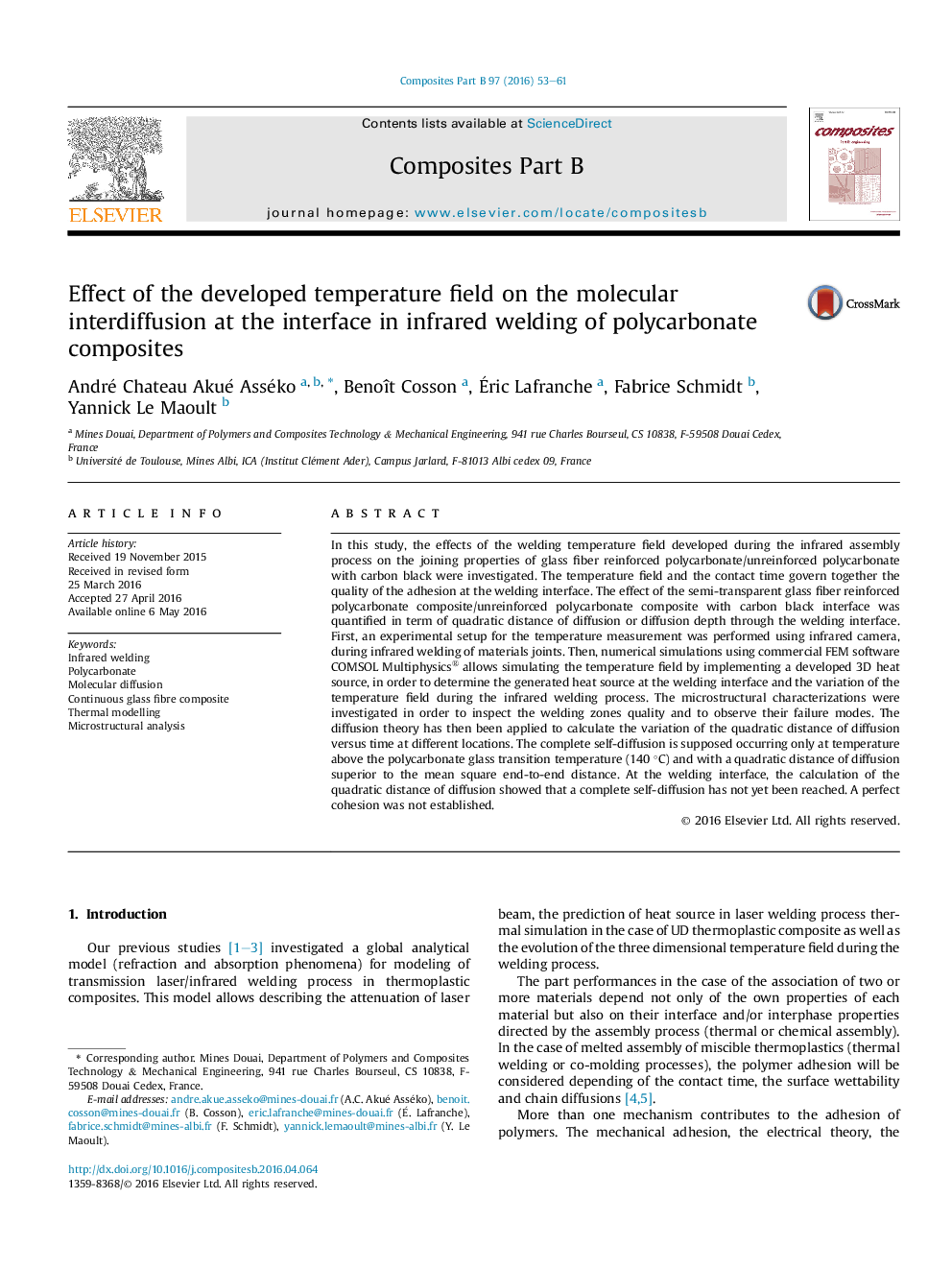| Article ID | Journal | Published Year | Pages | File Type |
|---|---|---|---|---|
| 816802 | Composites Part B: Engineering | 2016 | 9 Pages |
In this study, the effects of the welding temperature field developed during the infrared assembly process on the joining properties of glass fiber reinforced polycarbonate/unreinforced polycarbonate with carbon black were investigated. The temperature field and the contact time govern together the quality of the adhesion at the welding interface. The effect of the semi-transparent glass fiber reinforced polycarbonate composite/unreinforced polycarbonate composite with carbon black interface was quantified in term of quadratic distance of diffusion or diffusion depth through the welding interface. First, an experimental setup for the temperature measurement was performed using infrared camera, during infrared welding of materials joints. Then, numerical simulations using commercial FEM software COMSOL Multiphysics® allows simulating the temperature field by implementing a developed 3D heat source, in order to determine the generated heat source at the welding interface and the variation of the temperature field during the infrared welding process. The microstructural characterizations were investigated in order to inspect the welding zones quality and to observe their failure modes. The diffusion theory has then been applied to calculate the variation of the quadratic distance of diffusion versus time at different locations. The complete self-diffusion is supposed occurring only at temperature above the polycarbonate glass transition temperature (140 °C) and with a quadratic distance of diffusion superior to the mean square end-to-end distance. At the welding interface, the calculation of the quadratic distance of diffusion showed that a complete self-diffusion has not yet been reached. A perfect cohesion was not established.
